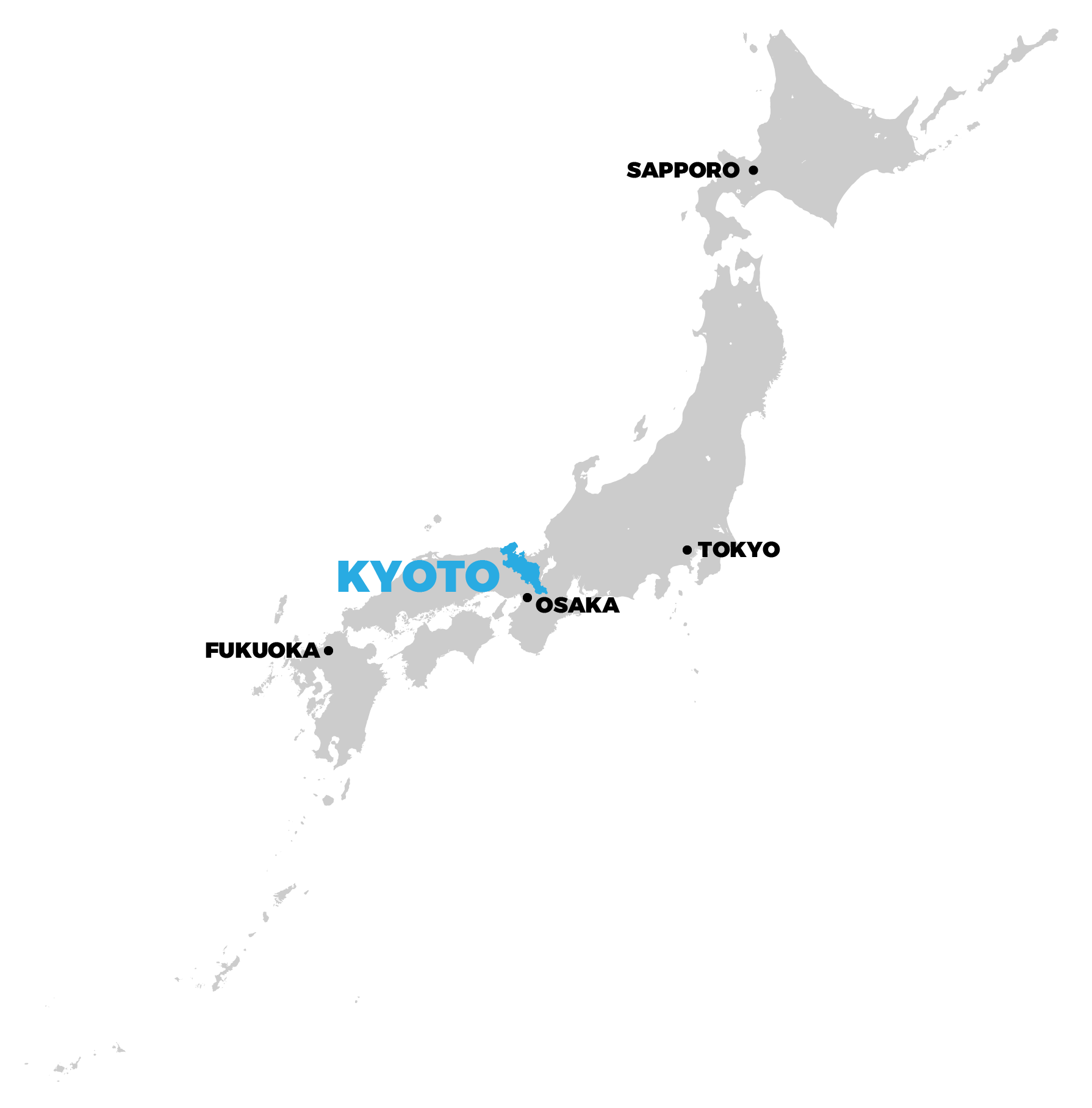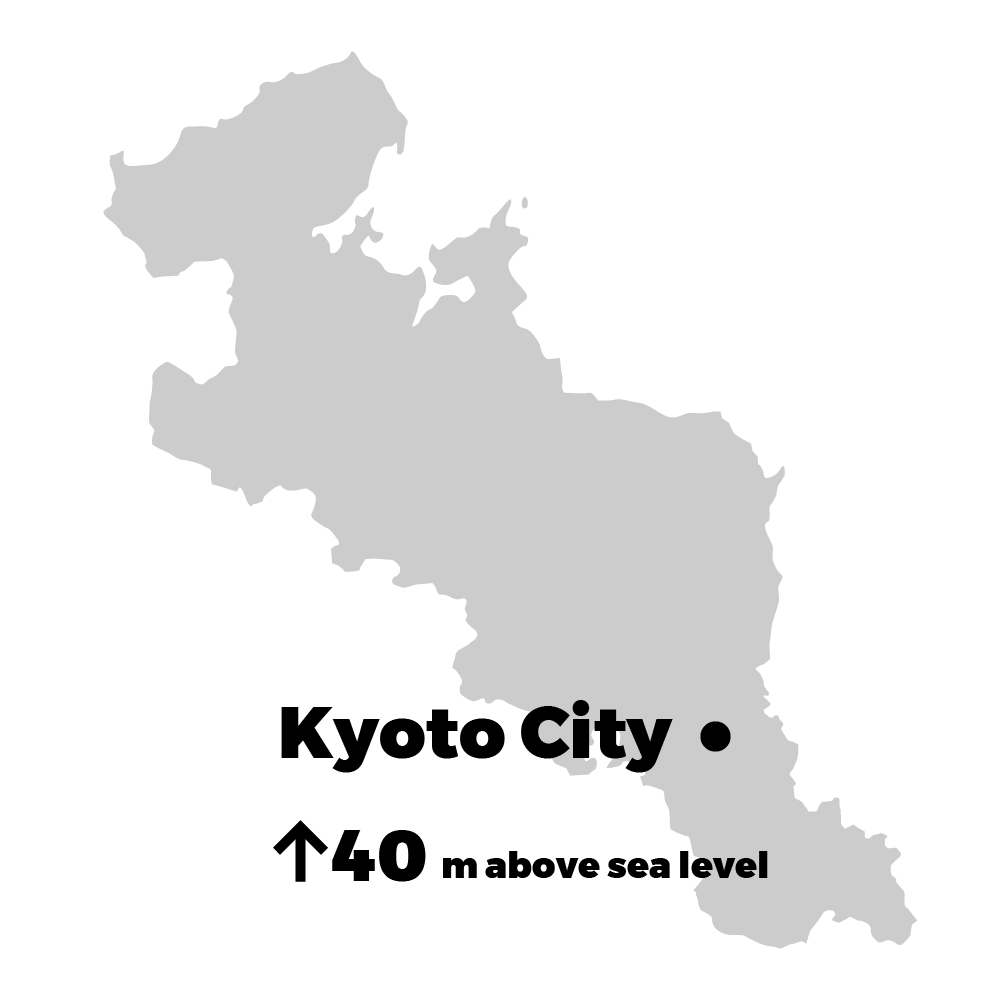KYOTO
Well-Known Ancient Capital and Hidden Scenic Routes
OVERVIEW
Kyoto is a destination that many people include in their itinerary when traveling to Japan. The true charm of this ancient city lies in its traditional streetscapes and the joy of visiting its many temples and shrines.
While Kyoto is a hugely popular tourist destination, its public transportation network is less extensive than that of major cities like Tokyo or Osaka. The famous temples and shrines are scattered across Kyoto City, making bicycles an ideal mode of transportation for exploring them efficiently. The central area of Kyoto is flat, making cycling easy and accessible for riders of all levels. Some well-known temples and shrines are located in the mountains, but the elevation gains are only a few hundred meters, offering enjoyable hill climbs as a rewarding challenge during your ride.
Heading south from Kyoto City, cyclists can follow riverside cycling paths that lead to Osaka or Nara. Alternatively, traveling east offers easy access to Lake Biwa, home to one of Japan’s most renowned cycling routes.
As a base for exploring the surrounding areas by bike, Kyoto is an excellent choice.

Temple and Shrine Hopping
First and foremost, why not make the most of your bicycle for temple and shrine hopping?
Kyoto’s central area is a basin surrounded by mountains, with a grid-like layout that makes the flat terrain easy to navigate. This means you’re less likely to get lost, and the city is well-suited for cycling.
Many of Kyoto’s famous temples and shrines are also located along the foothills of the surrounding mountains, often far from train or bus stations. By avoiding the crowded city center and opting for a bike, you can efficiently visit these iconic spots at your own pace.
Note: Due to increasing congestion in recent years, cycling is currently prohibited in certain parts of the city center. Please check here for details.
Cafe & Bakery Hopping
No cycling adventure is complete without a coffee stop, right?
Interestingly, Kyotoites love their coffee, and Kyoto boasts the highest coffee consumption per capita in Japan! As a result, the city is packed with cafes, rivaling even Tokyo. You’ll find a wide variety of options, from modern cafes offering specialty coffee to Japan’s uniquely retro-style Kissaten coffee houses.
But that’s not all—Kyotoites also have a deep love for bread, consuming more of it than any other region in Japan. Naturally, the city is home to an incredible variety of bakeries. In Kyoto, it’s common to start the day with coffee and toast at a cafe, a staple of the local breakfast culture.
In short, Kyoto is a paradise for cyclists looking to refuel and indulge!
Riverside Cycling Paths
When exploring Kyoto by bike, the cycling and pedestrian paths along the city’s two main rivers are a convenient option.
Kamo River:
The Kamo River, a well-known sightseeing spot, runs north to south along the eastern side of Kyoto City. Both sides of the river are lined with pathways that are accessible to cyclists. Since the area is popular with pedestrians, be mindful of your speed and prioritize safety. If you head further west beyond the Kamo River and cross a mountain pass, you’ll arrive at Lake Biwa, the largest lake in Japan.
Katsura River:
The Katsura River flows north to south on the western side of Kyoto City. A well-maintained cycling road runs along its banks and is part of a larger cycling network connecting Kyoto, Nara, and Wakayama. One of the highlights along the Katsura River is Arashiyama, a picturesque area known for its bamboo groves and wooden bridges. Starting from around Kyoto Station, you can follow the cycling path all the way to Arashiyama, which marks the route’s endpoint.
Bamboo Grove Ride
When it comes to iconic natural scenery in Kyoto, bamboo groves are a must-see. By using the Katsura River cycling road, you can visit two stunning bamboo groves.
The first is the famous bamboo grove in Arashiyama and Sagano, located at the starting point of the cycling road. Once a retreat for the nobility, this grove features tens of thousands of bamboo stalks stretching for several hundred meters, with picturesque pathways winding through them.
The second is the Otokuni Bamboo Path, about 15 km down the Katsura River cycling path from Arashiyama. Here, you can enjoy a serene ride through a 1.8 km-long bamboo grove, offering a peaceful and scenic cycling experience.
Note: If the paths are crowded with pedestrians, please dismount and walk your bike for safety.
Green Tea Ride
When visiting Japan, green tea is an essential part of the experience, isn’t it?
About 15 km south of Kyoto City lies Uji, renowned for its Uji-cha, one of Japan’s three most famous green teas. Around Uji Station, you’ll find numerous green tea shops offering a variety of green teas and matcha-based foods. Among the many types of green tea, Kyoto is particularly famous for Gyokuro, a variety high in caffeine, making it an excellent alternative to coffee for a mid-ride energy boost.
If you continue about 25 km further south from Uji, you’ll reach the Yamashiro district, known for its picturesque green tea fields. The sight of neatly trimmed tea bushes spread across sunlit hills offers a uniquely Japanese hill climb experience that’s as scenic as it is rewarding.
WEATHER

VIDEOS
VIEWS YOU CAN SEE
Photo byFree Photos of Kyoto
To learn more about cycling in Kyoto, please visit the official website